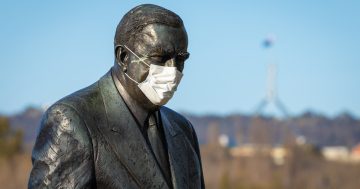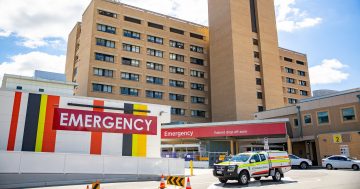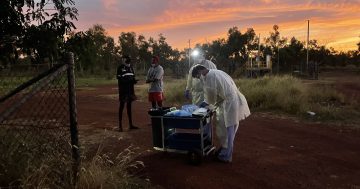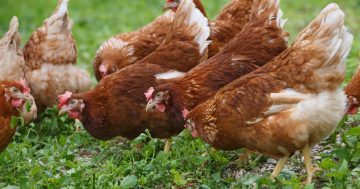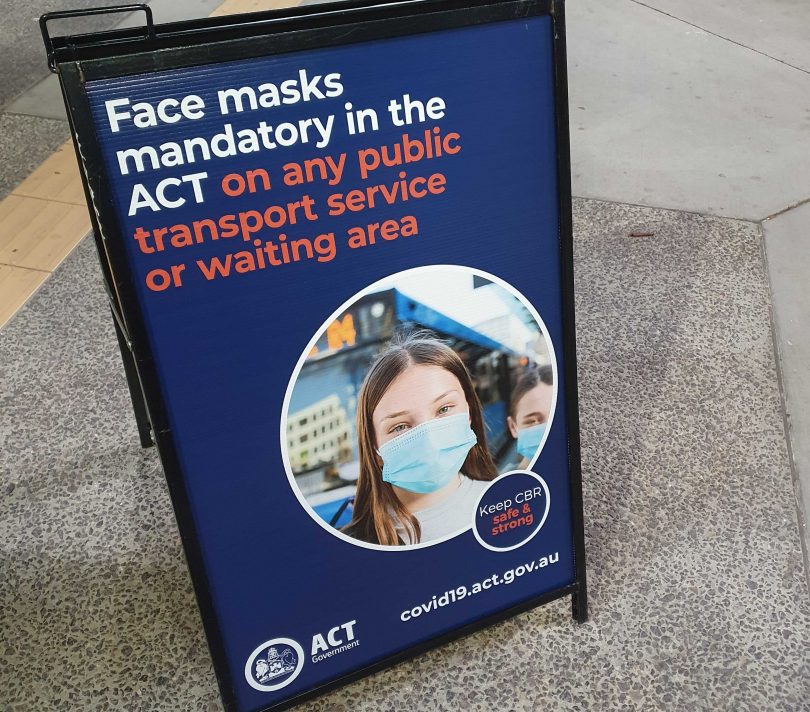
Face masks on public transport will remain mandatory in the ACT. Photo: David Murtagh.
This week the ACT nearly hit 1000 new COVID-19 cases in a day, yet today the easing of public health measures will continue with masks no longer required in certain settings.
It comes after density limits were scrapped, despite the number of new cases hovering around 500 a day, and for most of us, it seems as if society is getting back to normal.
Two years ago, it would have been considered unthinkable to tolerate such case numbers and allow the kinds of public gatherings and events that are now able to take place.
The difference is the variant itself. Omicron may be more contagious, but its effects are, on the whole, less threatening than previous variants.
Health authorities have taken heart in the fact that hospitalisations have declined, now sitting at about 40, with one or two in ICU, and often none requiring ventilation.
The other factor, of course, is that the ACT is a small island within NSW and is falling into line with that state and Victoria.
It should be remembered that all three jurisdictions have not abandoned public health measures but calibrated them to what they see as the continuing evolution of the virus.
Despite the pain in aged care centres, the response of the last two years is no longer seen as commensurate with the threat Omicron poses. And it has to be said the governments have exhausted their resources or at least appetite to support social restrictions and lockdowns.
But some measures remain, such as wearing masks in places such as public transport, at Canberra Airport, child care centres and schools, and high-risk settings such as hospitals and aged care facilities.
It does not mean one should not wear a mask in other settings; in fact, the Chief Health Officer and the Health Minister are encouraging people to keep wearing masks in places where social distancing is difficult and in customer-facing roles, in a shift to personal responsibility.
And people should maintain all of the hygiene measures that have become part and parcel of living with COVID, the extra payoff being that if there is a return to a flu season this year, that virus will also be contained.
They have also warned that the situation could still change, including the possibility of new variants.
This should not be confusing or seen as a repudiation of measures that have kept the virus in check over the past couple of years and made the ACT one of the safest places on the planet. It simply reflects the reality of Omicron and the ACT’s geography.
There is risk attached to the new stance, and the outcomes will determine whether it has been worth it.
If case numbers skyrocket and drive up hospitalisations, serious illness and deaths, the response will undoubtedly be swift.
But after years of restrictions, social and economic pain, the highly vaccinated ACT heads into its Autumn festival season optimistic it can live with the virus.
We are not back to whatever we thought was normal, but we can breathe a little easier.












